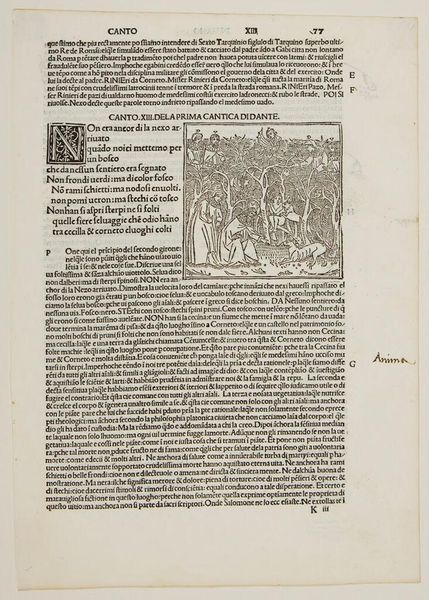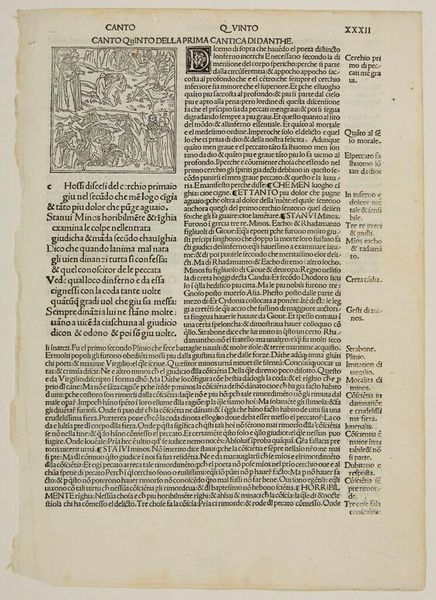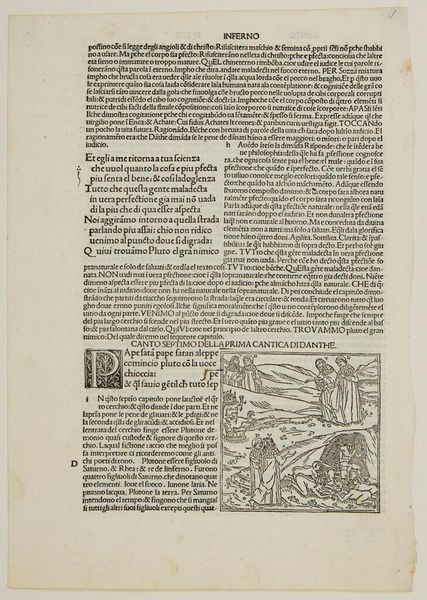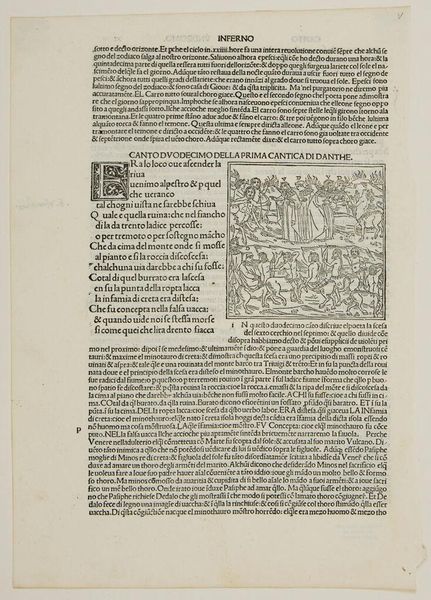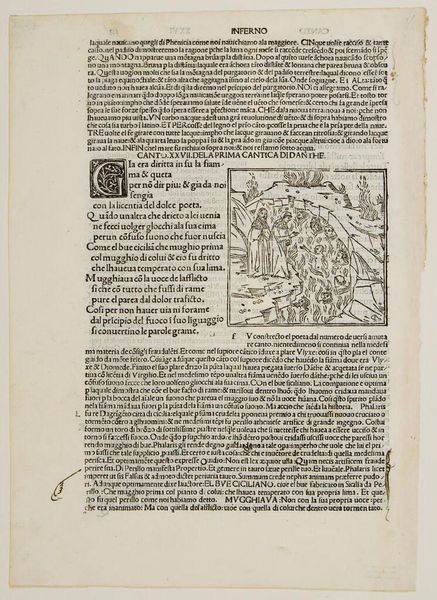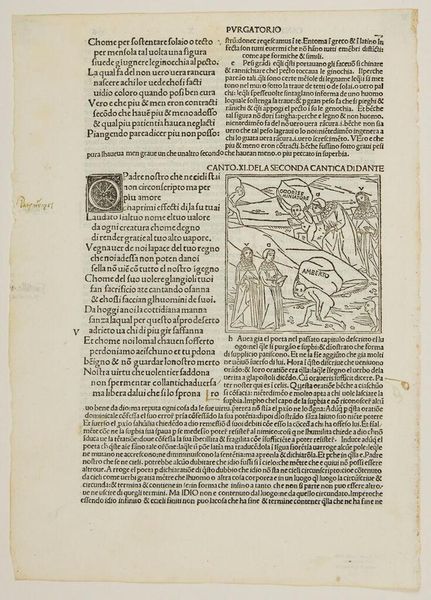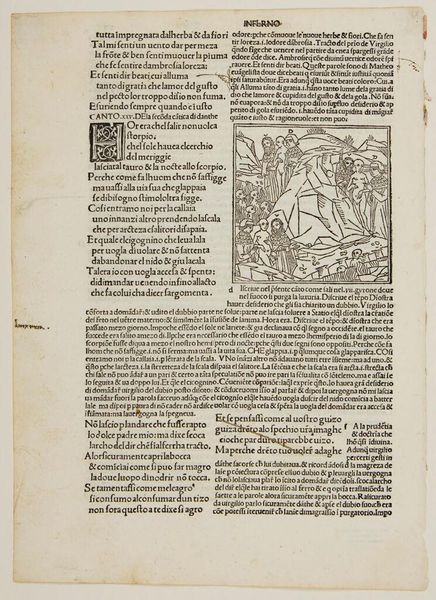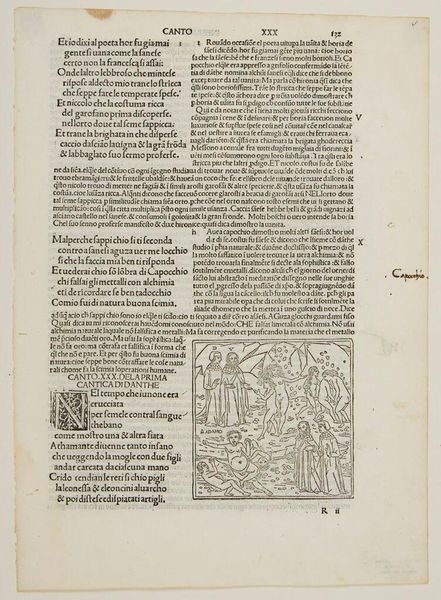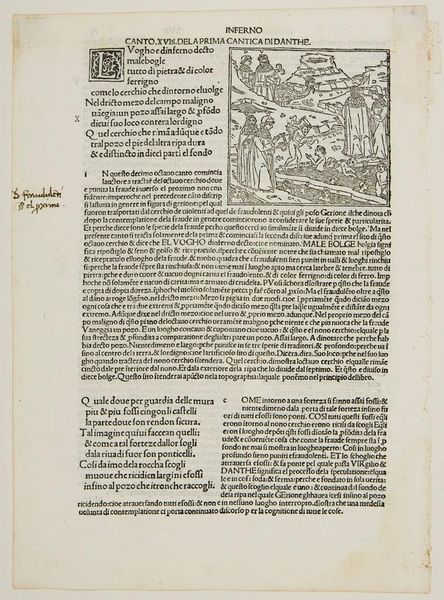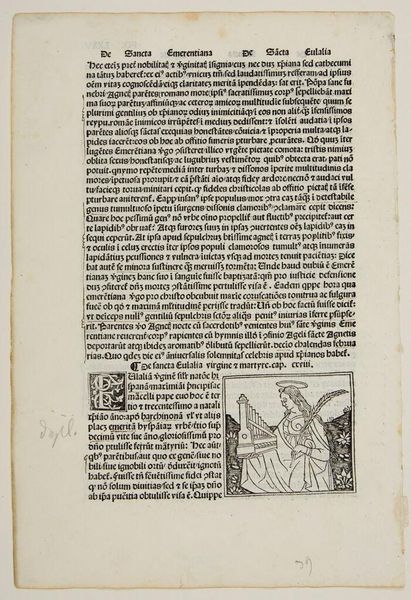
Canto III. The Gate of Hell; The River Acheron; Charon the Ferryman; The Souls of the Indifferent c. 15th century
0:00
0:00
Copyright: CC0 1.0
Curator: This woodcut, titled "Canto III. The Gate of Hell; The River Acheron; Charon the Ferryman; The Souls of the Indifferent," illustrates a scene from Dante’s Inferno. It is the work of an anonymous artist. Editor: It's stark, isn’t it? The sharp lines really convey a sense of dread. The gate looms, and the figures seem trapped in a nightmarish state. Curator: Indeed. The artist captures the inscription above the gate: "Abandon all hope, ye who enter here." It's a powerful message about the loss of agency and the absence of divine grace. Charon, the ferryman, stands ready to transport souls across the river Acheron. Editor: I see the huddled figures near the river, all looking desperate, but also indifferent, as the title suggests. The symbolism is heavy here. Water as a boundary between worlds, and the gate…it's all so foreboding! Curator: Yes, the cultural memory associated with these symbols is potent. The imagery of hell, the journey of the soul, it all reflects deep-seated anxieties about morality and the afterlife in the medieval imagination. Editor: The way the artist renders Charon himself, though, is fascinating. He's not monstrous, just...businesslike. Almost as if this grim task is simply part of his job. Curator: A chilling thought. This artwork gives us a glimpse into the visualization of sin and punishment during that time, and how it was shaped by social and cultural beliefs. Editor: Absolutely. It is a stark reminder of how artists have depicted the human condition and the moral weight of choices for centuries.
Comments
No comments
Be the first to comment and join the conversation on the ultimate creative platform.


